The world’s 50 biggest fmcg giants have seen growth slow, though they have outpaced smaller players. As restrictions ease, how permanent is the new dynamic?
The pandemic may have provided a shot in the arm for grocery sales, but the world’s largest fmcg companies have found themselves infected by the wider fallout from the global lockdowns.
So shows The Grocer/OC&C Global 50, with grocery revenues growing just 1.1% across the market’s 50 biggest fmcg giants in 2020. That’s down from 3.9% in 2019 and the lowest figure seen since the 0.5% rate of 2016.
Organic growth was a little better at 1.7% across those that split out like-for-like numbers, but that was still well down on the 3.8% of 2019 and 1.9% of 2016.
The picture that emerges is one of a widened chasm between winners and losers. Food and drink companies were up by 4.7% in the period (an improvement of 1.1 percentage points on 2019), while the beers & spirits sector slumped 8.7% (a 12.3 ppts reversal) and diversified companies fell 3.2% (down 11.4 ppts on 2019).
That has resulted in a higher churn than usual in the Global 50. Five companies changed their ranking by more than six places – led by Kweichow Moutai and Conagra, while LVMH, Kao and Molson Coors lost six or more places. There were also three new entrants: Tingyi, Imperial Tobacco and Saputo. Meanwhile, Shiseido, Carlsberg and J&J dropped out.
The obvious explanation is those with high conventional grocery exposure benefited from covid restrictions, while those with out-of-home exposure took a hit.
In this environment, alcoholic drinks players were the most obvious casualties, with Heineken and AB InBev declining by 18% and 10% respectively and only China’s Kweichow Moutai bucking the trend.
“In the short term, suppliers are hurting as they have higher costs that they haven’t been able to pass on yet”
The effect on wider food and drink players was more nuanced, given the likes of Nestlé, Unilever and Danone also have significant out-of-home exposure through ice creams or waters. These losses were largely mitigated by in-home sales, resulting in a flat picture overall. Jefferies consumer analyst Martin Deboo says there was natural hedging in businesses operating on both ends of the spectrum. “There was enormous disruption to sales patterns, but on a headline level it was much more like ‘steady as she goes’,” he says.
The geographical diversification of the industry’s biggest players also played a part in the fortunes of this year’s Global 50, points out OC&C global managing partner Will Hayllar. The Covid boost to grocery has been more prevalent in developed markets, he explains. Outside those, the grocery increase has been less significant and some of those more globalised categories have a high level of out-of-home consumption.
The top performers of the past year

Wilmar
Sales: $23.2bn
Sales growth: 21.2%
Profit margin: 5%
Margin delta: +0.0ppts
Singapore based agri-group Wilmar International drove strong double-digit growth through product innovation and increased capacity. It capitalised on global demand for health foods, launching produce including zero-trans fatty acid oils and wheat core flour to drive a 20%-plus uplift in its food products sales. The group also benefited from the IPO spin-off of its China-based Yihai Kerry Arawan Holdings subsidiary, with its RMB14bn listing the largest on the Shenzhen exchange. Shares have almost doubled since its October 2020 IPO.
Grupo Bimbo
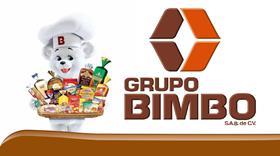
Sales: $16.6bn
Sales growth: 13.4%
Profit margin: 8%
Margin delta: +0.7ppts
The Mexican bakery had another stellar year of top-line growth, driven by acquisitions and its expanded global footprint. The group acquired Modern Foods, a South Indian baking player accounting for 35%-40% of the Indian bread market, while subsidiary Bimbo QSR entered Kazakhstan via a joint venture with Food Town, which supplies buns to McDonald’s. The deals expanded its presence to 33 countries. The group also entered the sweet baked private label market with the acquisition of a Cerealto Siro Foods plant in Spain.
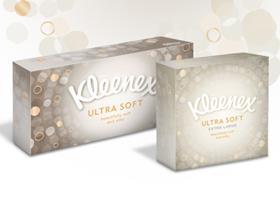
Kimberly-Clark
Sales: $16.1bn
Sales growth: 6.4%
Profit margin: 18%
Margin delta: +0.8ppts
US personal care player Kimberly-Clark grew its top line through strong organic growth and tactical M&A, while also padding margins through cost controls. It rode the Covid boom for consumer tissues, which grew the division’s value 12% year on year to 35% of total sales as volumes and prices increased. Meanwhile, it bought of Softex Indonesia to bolster its presence in Southeast Asia, boosting its overall fourth quarter sales by 2%. Continued focus on the cost base drove $455m of savings since 2018, helping to boost margins.
Conagra
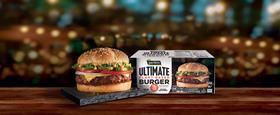
Sales: $11bn
Sales growth: 15.9%
Profit marign: 14%
Margin delta: +0.3ppts
US grocery supplier Conagra was one of the key names boosted by the boom in at-home consumption during the Covid period and a jump in demand for frozen products and snacks. Its grocery and snacks and frozen segments were up 18% and 22% year on year respectively, boosted by innovation and launches of plant-based frozen products and keto cakes. The top line was also bolstered by the incorporation of its 2018 Pinnacle Foods acquisition, which added 8% to its overall sales through well-known brands like Birds Eye.

Tingyi
Sales: $10.4bn
Sales growth: 10.2%
Profit margin: 9%
Margin delta: +2.1ppts
China’s biggest noodle producer enjoyed strong growth, driven by NPD and favourable market conditions for instant noodles. Tingyi achieved 17% growth in the category against the market average of 4.7% as it introduced new products and packaging, particularly focused on younger consumers. The producer launched sugar-free ranges and refreshed its brand image through youth-focused marketing. It also invested heavily in online, while promoting its Line View tool to improve manufacturing efficiencies and cut production costs.
This ‘winners and losers’ picture is also evident in profit margins. Alcohol and diversified companies saw drops of 1.5 and 1.3 ppts respectively, while other areas saw mild margin improvement.
But as an aggregate, profit margins dropped by 0.3 ppts in 2020, with adjusted EBIT margins back down to 18.4% – reversing steady increases since 2016. Gross margins dropped more dramatically still, contracting by 1.6 ppts back to 45.5% – the lowest figure since 2015.
Hayllar argues the tightened margins reflect the effects of “losing out on typically higher margin out-of-home channels”. He also points to the supply chain costs of managing Covid measures and staff shortages in the manufacturing and distribution process.
This impact was mitigated somewhat by reduced costs – most notably, a reduction in marketing spend. In 2020, all sectors except household and personal care cut marketing budgets as a proportion of revenues. Food and drink was the most significant with a 0.9 ppts reduction, reflecting the lack of advertising for products typically consumed out of home. There were also reductions in expenses related to travel restrictions.
Changing dynamics
Some of these dynamics are naturally beginning to reset as restrictions ease, leisure and hospitality venues reopen and global travel resumes.
However, Bruno Monteyne, Bernstein senior analyst for European food and home & personal care, notes that this trend reversal is proving more gradual than some expected. “Covid is staying around longer and there are more doubts about how long it will take for all of us to go back to our old habits,” he says.
Whatever happens on this front, the squeeze on margins seen during Covid is unlikely to go anywhere soon. The raw materials and commodities picture was relatively benign in 2020 as Covid recessions led to a drop in global inflation – but that is changing fast.
As economic recovery gathers pace, inflation is expected to rise to around 4% in 2021 and at a far faster rate for key underlying commodities, such as transport, petrochemicals, plastics and food ingredients (p31).
This summer a number of Global 50 players, including Unilever, Nestlé, Heineken and Reckitt Benckiser, all warned cost input hikes would put the squeeze on margins in the second half of this year.
Hayllar calls the incoming wave of inflation “significant, but not unprecedented”, highlighting bigger inflationary spikes in 2011 and 2008. Nonetheless, it represents a stark reversal of benign global inflationary conditions since 2011 and is, according to Deboo, “about as dramatic as anything we’ve seen”.
The spate of margin downgrades suggests input inflation is already hitting the bottom line, but the full effects are unlikely to be felt until at least 2022.
Giulio Lombardi, head of EMEA food, beverages, tobacco and consumer at Fitch Ratings, says companies will be significantly hedged against these major commodity movements in the short term, but will begin to feel the full weight of inflation when these hedges run out by the end of 2021. At that point, “companies will need to decide whether to try to pass on cost increases through pricing or to absorb a little margin pressure”.
And while inflation can be hedged in areas like petrol or corn, Monteyne suggests wider inflationary pressures in plastics and transportation are harder to mitigate. That means suppliers are already feeling the pinch in some areas.
“Some of these cost increases have hit suppliers immediately, but at the same time you have to wait on average six to nine months before you see retailers pass on some of that inflation,” he says. “In the short term, suppliers are hurting as they have higher costs that they haven’t been able to pass on yet.”
The better news for suppliers is their record of passing on inflation is strong. OC&C found that in the UK they were able to pass on £5.6bn of the £5.7bn of commodity-driven inflation to retailers in 2007/08, £3bn of the £3.3bn in 2011 and £1.4bn of the £1.7bn in 2017-18.
“The conditions for passing pricing through are relatively favourable to the big brand owners,” Hayllar argues. “Partly because the factors driving inflation are so well understood in terms of real underlying cost inflation, and in a world where real availability issues are still impacting retailers who have no desire to get into trading disputes to disrupt supplies.”
Deboo agrees any margin hit is likely to be mitigated over the longer term. “There are lead and lag effects, so companies usually spill some margin in the early stages of the cycle,” he says. “But the industry has a good track record of recovering commodity inflation. It retains a great deal of pricing power and can find cost savings elsewhere or richen the mix.”
OC&C notes that historically margins have typically rebounded from inflationary hits by the next year and moved back into growth. Additionally, wider macro inflation is also likely to feed into higher wages in many markets, while the lack of travel and discretionary spend opportunities during Covid has meant consumers potentially have more available cash to spend on branded consumer goods. “The evidence so far is that consumers will be able to bear those inflationary cost increases,” Hayllar says.
At the same time, inflation could also lead to market share pressures from private label in developed economies as consumer shopping bills rise. That’s particularly true in more commoditised categories such as household goods or food staples like sauces or yoghurts, according to Bernstein’s Monteyne.
“This year retailers are going to be in decline,” he says. “And retailers hate shrinking as it’s not good for their cost structure, so one thing they try to do is lean more heavily on private label as they make more margin and can use it to gain leverage with suppliers.”
Another threat to Global 50 growth is the situation in emerging markets. Global fmcg has significant exposure to the more serious economic pressures and Covid threats in some of these regions.
“The pandemic has been bad for craft brands as retailers shied away from the complexity of dealing with niche suppliers”
Overall, though, Covid has largely been a tailwind for the Global 50 in its long-standing battle with smaller, more nimble, local and potentially on-trend insurgents. Having made up ground in recent years, largely through acquisition, the trend of share loss against insurgents was further reversed in 2020.
OC&C found multinational share change was improved in food, beauty and cosmetics last year, compared with the 2015-19 period, with only large personal care players losing further share.
“The pandemic has been bad for craft brands as the retailers shied away from the complexity of dealing with niche suppliers,” says Akeel Sachak, Rothschild & Co’s global head of consumer.
Global players were able to leverage the benefits of scale to overcome supply chain disruption, while smaller players struggled by comparison – particularly as they tend to outsource parts of the process. That led to some smaller players being squeezed in rationalisations, as retailers prioritised supply reliability over choice. Additionally, consumers came back to trusted, established brands during the crisis.
“If anything, Covid made life a bit easier for the big brands as from a competition point of view they had a free pass,” Monteyne says. Still, he doubts that will persist. “Those benefits will unwind and it will go back to what it is always about: innovating, exciting consumers, coming up with new ideas and doing something fundamentally better to earn your price premium.”
The online habit
That’s particularly true given that global players are facing fresh competition from small suppliers in one rapidly growing area: online. The pandemic has made the channel even more crucial – with online penetration rising by 8 ppts in the UK last year, 5 ppts in the US and 3 ppts in Western Europe.
Although this trend is likely to slow, 86% of consumers say they are likely to continue new online shopping habits, according to OC&C’s report.
This fundamental shift will benefit those players that have invested heavily in online capabilities and those with greater online exposure, such as L’Oréal (25% of sales) and P&G (15%). “Initially, online favoured smaller players who were faster to adopt the tools needed to achieve success in online channels, but the majority of big players have invested very heavily in the last decade and frankly are now in a good position to manage that channel migration,” Hayllar says.
Major players continue to make tentative pushes into the direct-to-consumer space – with PepsiCo launching a DTC website during the crisis and Coca-Cola scaling up its home delivery platform in Latin America.
However, much of the push in digital is via M&A – with Colgate buying vegan toothpaste and mouthwash player Hello Products, Danone buying DTC consumer probiotics and gut health company Sun Genomics and Nestlé acquiring UK recipe kit player SimplyCook.
These acquisitions have typified what M&A activity there was in 2020 (see box, left), with Fitch’s Lombardi noting particular focus on “acquiring innovation in developed markets”. It’s an example of how M&A activity has bounced back in 2021 as the industry comes out of Covid, led by Nestlé’s $5.8bn acquisition of supplements player The Bountiful Company.
The UK alone has seen a surge in private equity-backed dealmaking so far this year – with two of the big four supermarkets subject to multibillion-pound bids and Bain Capital’s £1.5bn buyout of Valeo Foods.
That hunger for grocery assets has also provided opportunities to divest assets to PE – such as PepsiCo’s sale of Tropicana and Unilever’s expected tea division sale – and also points to the enduring strength of the global grocery sector as the economy recovers.
Altogether, the Covid period – contrary to some suggestions – wasn’t a land of milk and honey for global fmcg suppliers. The industry suffered sales slowdowns and margin contractions reflecting wider economic chaos. Now, the industry must face and mitigate a wave of inflation.
But the experience of 2020 shows the global fmcg industry deserves its reputation as a rock in stormy seas. And the scale of the multinational giants will help them navigate the waves better than most.
OC&C Global 50 food and beverage report and ranking: the impact of Covid-19
- 1
 Currently reading
Currently readingOC&C Global 50 food and beverage report and ranking: the impact of Covid-19
- 2
- 3




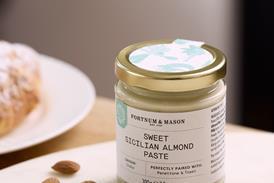


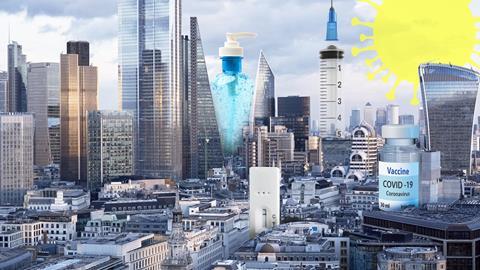




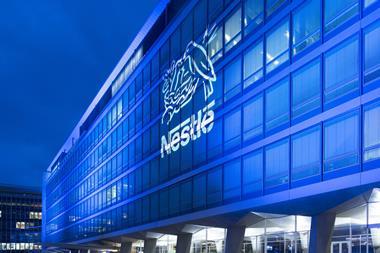
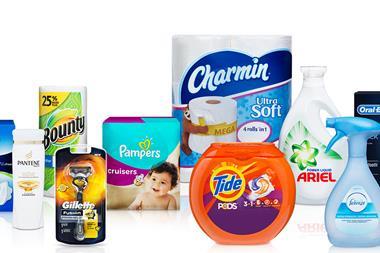
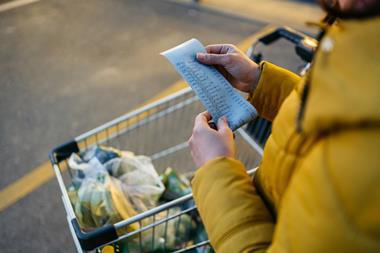







No comments yet